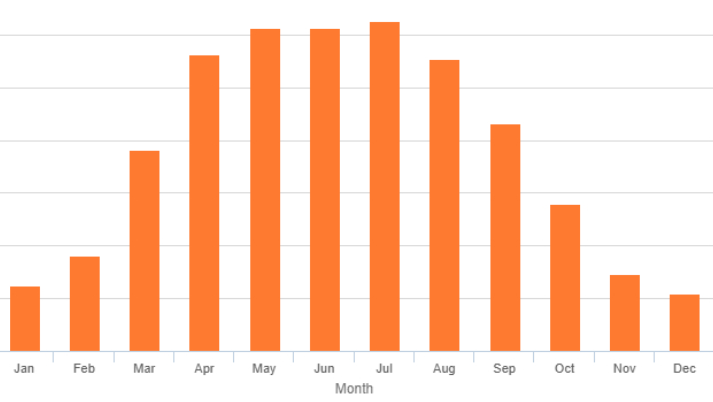Thanks for sharing. At first glance this may give the impression that the configuration will run solely on the solar panel the whole year but reality is a bit more complex:
The above measurements of (only) battery voltage over a limited number of 3 consecutive days (from a total of 365) are not representative for the amount of energy (battery charge) that was produced by the solar panel. Neither is ‘an average cloudy sky’ representative for the amount of received solar energy.
I previously posted here about having sent 72000+ uplinks with a HTCC-AB01 board on a single 1200 mAh Lipo battery charge (without solar panel). After 72000 uplinks the battery voltage was still 3.69V.
Let’s assume that I started with a full battery voltage of 4.2V and that the battery voltage (on average) decreased linearly with every uplink message. That means a decrease in battery voltage of (4.2 - 3.69) / 72000 = 0,00000708333 V per uplink message.
You sent about 4 * 24 * 3 = 288 uplink messages in those 3 days. With an oversimplification of reality, compared to above calculations from my test, that would cause a decrease in battery voltage of about 0.00256 V over those three days (for sending 3-byte uplink messages without sensor measurements). Your battery capacity is even larger so voltage should even decrease less. You are measuring/reporting with two decimals accuracy and therefore won’t notice such small decrease.
I only did send uplink messages during my test without performing any sensor measurements so your configuration will probably draw a bit more current while not asleep.
This probably explains why you see the variations in battery voltage (over a 0.02 V range) during those 3 days. The decreases caused by consumption of the board and sensor and the increases caused by charging from the solar panel.
Not really. Your graph shows an average 0.01V decrease in battery voltage over the 3 days in September which indicates that the battery did not get fully recharged by the solar panel. When extrapolated the decrease is 1.22V for a full year. September is not one of the least solar productive months. Expect much less charging during the autumn and winter months. Consumption will not change so the battery will drain more during those months (and battery voltage will drop accordingly).

Example of distribution of monthly in-plane radiation for fixed angle for some Dutch city.
If you want to use battery voltage as indictor to see if the battery and solar panel are sufficiently dimensioned, this will require measuring battery voltage over a much longer period that should include some of the least solar productive months.